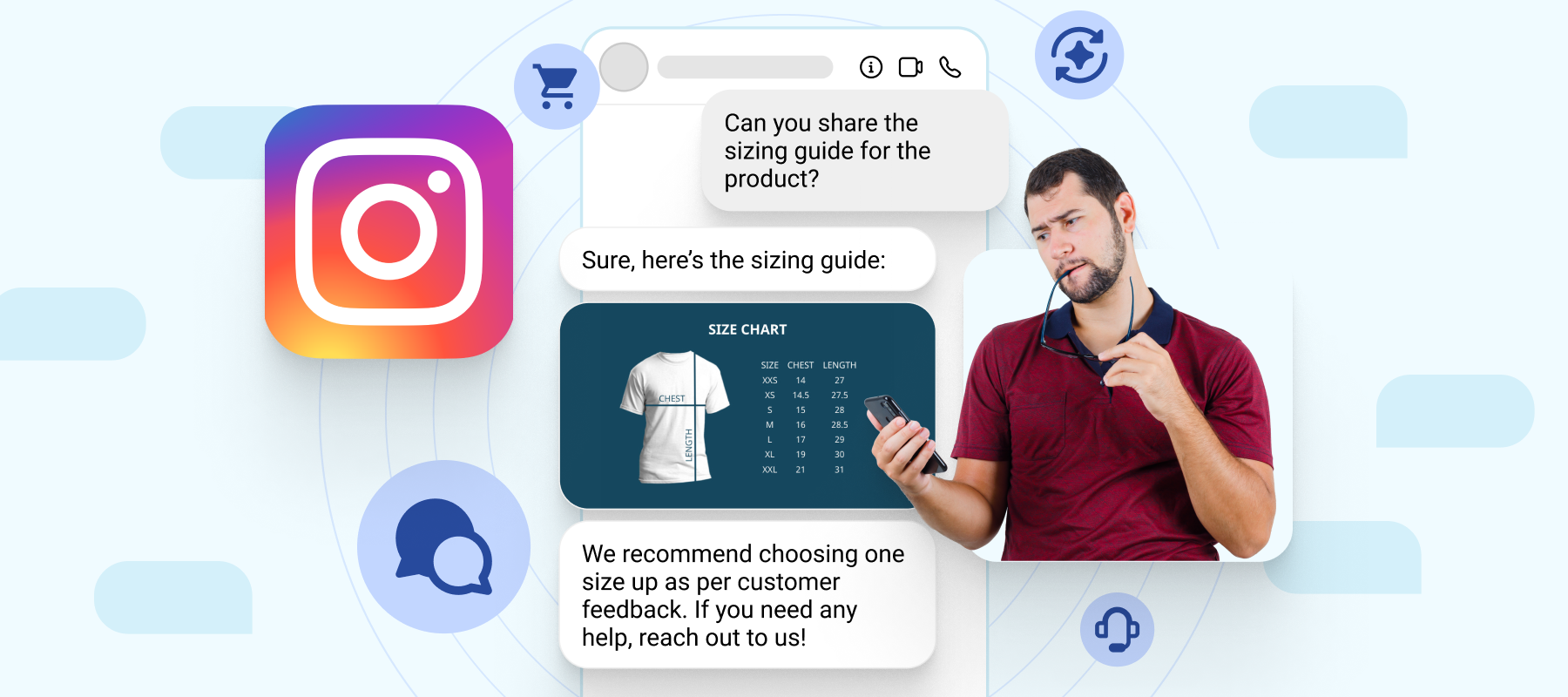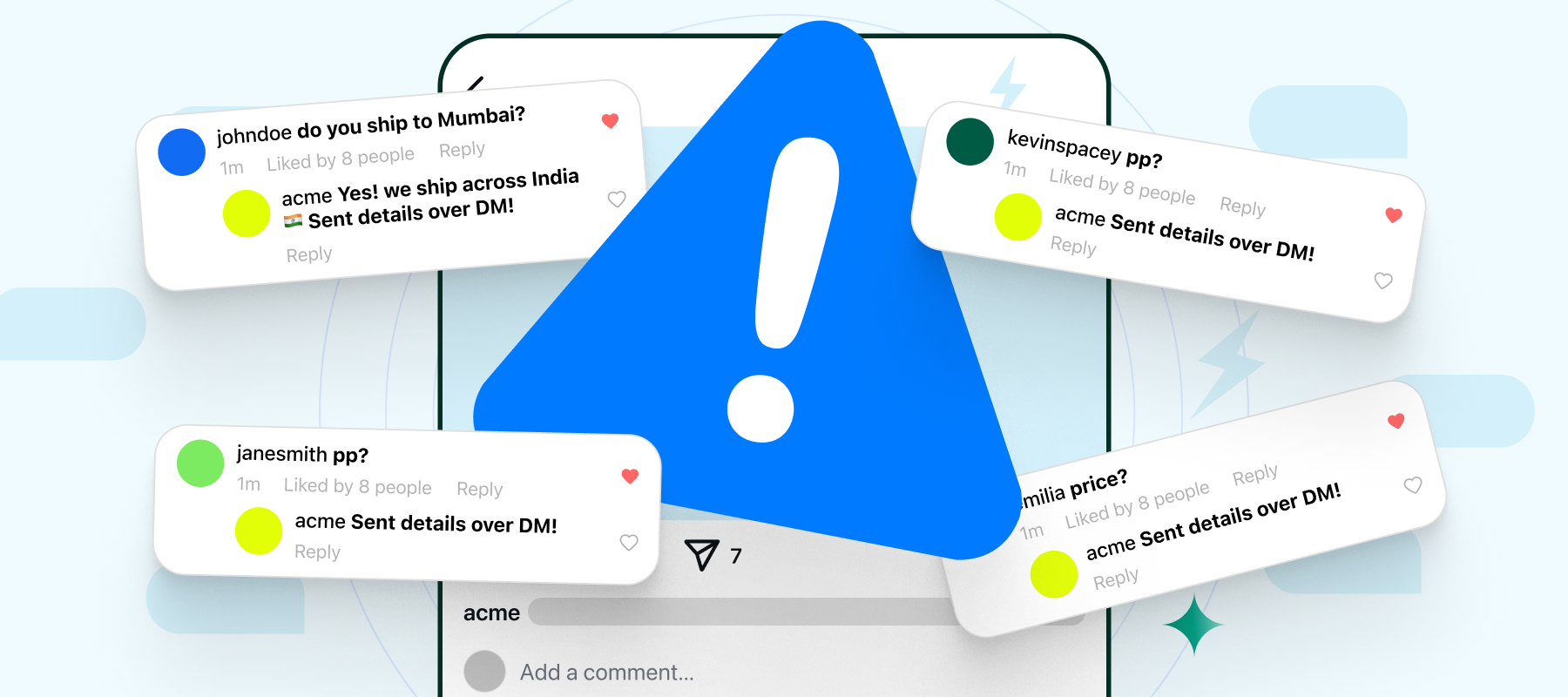With users now expecting near-instant replies, automated messages have become a common tool for businesses. They help deliver timely responses, keep communication going 24/7, and make it easier to manage conversations at scale.
But there’s a challenge – automated responses often come across as generic and impersonal, which is exactly what causes users to disengage or ignore the message altogether.
That’s why personalization matters. If done right, it makes every interaction feel intentional and personal, even if it’s automated.
In this post, we’ll walk through how to personalize your automated Instagram automation messages in a way that feels natural, engaging, and far from robotic.
Why Personalization Matters in Instagram Messaging
When users receive a message from a business, their first thought is often whether it came from a real person or an automated system. If it feels automated, the sense of connection disappears almost instantly.
That’s why making automated messages feel more natural and human is essential, especially on a platform like Instagram, where interactions are fast, casual, and highly personal.
Here are some key benefits of personalization on Instagram:
-Enhanced customer preference: Personalized interaction is what 81% of consumers prefer, so tailoring your Instagram automated messages helps you deliver what customers want.
-Improved customer understanding: 70% of consumers value interactions where brands recognize their past purchases or support history, making personalization key to creating more meaningful conversations.
-Increased revenue potential: Businesses that personalize effectively can see a revenue increase of up to 15% by creating more relevant and engaging experiences.
-Reduced customer acquisition costs: Implementing personalization can lower customer acquisition costs by up to 50%, helping you to scale more efficiently without increasing your spending.
-Higher marketing ROI: Personalized campaigns can increase return on investment by 10-30%, improving overall campaign performance and impact.
How Personalization Improves Customer Relationships
Personalization acts as a bridge between brands and users on Instagram. By tailoring messages to individual behaviors, such as engagement patterns, content preferences, or past interactions, businesses create a sense of recognition that strengthens the customer connection.
When users feel understood, they are more likely to respond, return, and recommend. Personalization directly contributes to:
-Stronger Customer Loyalty: Relevant, personalized messages create repeat engagement and long-term relationships.
-Enhanced Customer Satisfaction: Timely and tailored responses improve user experience, leading to higher satisfaction.
-Positive Word of Mouth: A personalized approach increases the likelihood that users will share or recommend your brand.
On Instagram, where attention is limited and competition is high, personalization creates the foundation for stronger, lasting customer relationships.
Techniques to Make Automated Messages More Human
Here are key techniques to make your Instagram automated messages feel more personal and human:
1. Using the recipient’s name in messages
Addressing users by their first name is one of the simplest ways to make an automated message feel more personal and human. It immediately adds a sense of recognition and makes the interaction feel more direct.
For example, instead of saying “Thanks for following us,” you can say “Hi [First Name], thanks for following us! Let us know if you’re looking for something specific; we’d love to help.”
2. Customizing responses based on user interactions
Tailoring responses based on user actions, like poll votes or story replies, adds relevance. It shows you’re responding to behavior, not just sending standard messages.
For example, if you post a story poll asking “Which style do you prefer: Sneakers or Loafers?” and a user selects “Sneakers,” you can follow up with “Hey [First Name], looks like you’re into sneakers. Here’s our latest drop: [link]”
3. Adjusting tone and language for different audiences
Not every audience responds to the same tone. A younger audience might engage better with informal language, emojis, and slang, while a more professional audience may expect a direct and polished tone. Adjusting your language based on who you’re speaking to helps the message land better.
For example, a Gen Z audience interested in streetwear might respond well to a message like, “Yo [First Name]! Our latest drop just went live, don’t miss it 🔥”
Leveraging AI for smarter personalization
Here’s how brands can use AI to create more intelligent and relevant Instagram messaging:
1. AI-powered chatbots that analyze user preferences
Use AI chatbots that track user activity, such as products viewed, buttons clicked, or frequently asked questions, to build user profiles in real-time. This allows the bot to send highly relevant product suggestions or support messages.
Example: If a user often browses “fitness gear,” the bot can send early access messages for upcoming launches in that category, rather than sending updates on unrelated collections like home decor.
2. Adaptive messaging based on customer behavior
AI tools can track how users engage across multiple touchpoints, such as story replies, poll answers, link clicks, product views, or previous purchases, and use that data to refine future messaging.
This helps move users through personalized journeys based on their actual interests and evolving intent, rather than treating every follower the same.
Example: If a user constantly interacts with content related to meal plans but ignores fitness accessories, future messages can focus on recipes, dietary guides, or new meal kits.
Best Practices for Personalized Messaging
Here are some best practices for personalizing messages on Instagram:
1. Avoiding robotic or overly scripted responses
Write your messages the way your brand would speak. Use clear, natural language that sounds like it was written by a real person, not a template.
Avoid using stiff phrases like “your request has been received” and opt for simple, friendly alternatives instead. Personal touches, conversational tone, contractions, dynamic fields, or casual greetings, can go a long way in making your messages feel human.
2. Timing messages appropriately
Send messages shortly after a user interacts with your content. Messages that are triggered too quickly can feel automated, while delayed responses can lose context and clarity.
A brief delay of 1 to 3 minutes feels natural and avoids coming across as instant automation. For time-sensitive actions like replying to a poll or Q&A, timing helps maintain context and relevance.
3. Providing quick but contextual replies
Reply quickly, but ensure the message relates to what the user actually did. Referencing the user’s action creates relevance and shows your brand is paying attention.
This helps maintain a flow, rather than making the user feel like they’ve been dropped into a scripted sequence.
Common mistakes in personalization and how to avoid them
Even with the right tools, personalization can fall short if not handled carefully. Here are two common mistakes and how to fix them:
1. Overusing automation without customization
Over-relying on automation without adding relevance leads to messages that feel impersonal. Simply inserting a name isn’t enough if the message lacks context. Use user actions, such as past engagement or preferences, as triggers to keep messages aligned with actual behavior.
Also, leave room for real human interaction where it matters. Not every conversation should be automated. Some responses require a human touch to build trust and move the conversation forward.
2. Sending generic messages that feel spammy
Generic, repetitive messages can feel like spam, especially on a personal platform like Instagram. When users sense they’re receiving the same message as everyone else, engagement drops.
Avoid this by segmenting your audience and connecting messages to specific actions or interests, such as a story reply or poll vote. Small, relevant details make the message feel personal and increase the chance of a response.
Measuring the impact of personalized messaging
To improve your Instagram messaging strategy, you need to measure what works and what doesn’t:
1. Tracking engagement, response rates, and conversions
Monitoring how users interact with your messages is key to understanding their effectiveness. Track engagement metrics such as open rates (for message sequences), click-through rates (on links), and response rates to see how users are reacting.
Also, monitor conversion-related actions, such as product views, sign-ups, or purchases, triggered by messages. If users consistently ignore or exit your messages, that’s a signal to refine your timing, tone, or targeting.
2. A/B testing different messaging styles
Testing variations in your messages helps identify what resonates with different segments of your audience. You can experiment with tone (formal vs. casual), message length (short vs. detailed), timing (instant vs. delayed), or personalization depth (name only vs. action-based context).
Conclusion
With more and more brands using Instagram to connect with customers, competition for attention is fiercer than ever. Whether you’re handling engagement manually or using automation, generic responses are no longer enough.
To truly stand out, you need to personalize your messages in a way that captures attention and builds a real connection, and you need to do it at scale.
That’s where Interakt comes in. It helps you create tailored, timely, and relevant automated messages that feel human, not robotic.



